New ParticipACTION 2020 Report Card is out!
On June 17, ParticipACTION released its 2020 Report Card on Physical Activity for Children and youth.
What is ParticpACTION?
From the report:
ParticipACTION is a national non-profit organization that helps Canadians sit less and move more. Originally established in 1971, ParticipACTION works with its partners, which include sport, physical activity and recreation organizations as well as governments and corporate sponsors, to make physical activity a vital part of everyday life.
What is the report card?
From the report:
The 2020 ParticipACTION Report Card on Physical Activity for Children and Youth is the most comprehensive assessment of child and youth physical activity in Canada. The Report Card synthesizes data from multiple sources, including the best available peer-reviewed research, to assign evidence-informed grades across 14 indicators. The Report Card has been replicated in over 50 cities, provinces and countries, where it has served as a blueprint for collecting and sharing knowledge about the physical activity of young people around the world.
Why is it important?
The Report Card gives BTS an indication on the levels of physical activity amongst our primary target groups, children and youth. It guides our programming and our outcomes.
Given the increasing emphasis on mental health in today’s society, it is not surprising that emerging research has focused on the important role of physical activity in relation to children and youth’s mental health and psychosocial well-being, p. 9.
For example, children and youth who engage in insufficient physical activity have increased odds of obesity and symptoms of depression and anxiety, and those with insufficient physical activity and high sedentary behaviour have increased odds of suicide ideation and planning, p. 9
Family support has been shown to be positively associated with children’s physical activity levels. Furthermore, family-based interventions have been effective at improving physical activity levels in children and youth. How we move as a family has a direct impact on our kids. We need to use this knowledge to positively influence kids’ lives.p. 11
They also highlight the affects of COVID-19 on children and youth:
Only 4.8% of children (ages 5-11) and 0.8% of youth (ages 12-17) were meeting 24-hour movement behaviour guidelines during COVID-19 restrictions, compared to the 15% (5-17 years) prior to the pandemic.
62% of kids and teens were being less physically active outdoors.
79% of kids and teens were spending more leisure time on screens.
Grades
Physical Activity // D+
Last year // D+
39% of 5- to 17-year-olds in Canada meet the physical activity recommendation within the Canadian 24-Hour Movement Guidelines for Children and Youth
They provide a more detailed breakdown by age and gender in Table 1 on p. 40:
Participating in organized sports at least two times per week is associated with higher levels of daily physical activity, health-related fitness outcomes (i.e., strength, agility, aerobic fitness) and social acceptance, p.45.
Recommendations
Physical activity promotion efforts should focus on reducing inequalities and inequities (e.g., age, gender, ethnicity, socio-economic status).
Promote physical activity early and often, and identify many ways to incorporate purposeful and incidental daily physical activity.
Active Play // F
Last year // D+
21% of 5- to 11-year-olds in Canada spend >1.5 hours a day in unorganized physical activity, according to their parents (2016-17 CHMS, Statistics Canada).
Physical Education // D+
Last year // C-
37% of 5- to 11-year-olds in Canada receive at least 150 minutes of physical activity per week during class time at school, according to their parents (2016-17 CHMS, Statistics Canada).
On an average school day, students in grades 6 to 10 in Canada accumulate 26 minutes of physical activity during class time (2018 HBSC , PHAC)
Recommendations:
Schools should treat PE and DPA with the same respect as they do core subjects such as math, science and social studies.
Focus on enjoyment and inclusiveness rather than on competition and specialization while ensuring high-quality PE by trained and competent teachers.
Prioritize efforts to increase PE frequency and enhance the PE curriculum to support children’s and youths’ movement behaviours and learning.
Invest in training generalist teachers in PE-specific skills to facilitate their self-efficacy for
Psychological Benefits of Physical Activity during PE Classes
MVPA during PE class has been associated with numerous psychological benefits, such as higher beliefs regarding abilities to achieve goals/success, interest in tasks and increased enjoyment. Students’ positive experiences in PE class are often triggered by attractiveness of the task, social belonging, perceived competence, and autonomy concerning emotional experience. Thus, an environment in which students feel independent, competent and connected with their peers is crucial in facilitating positive experiences. p. 68
Physical Literacy // D+
Last year // D+
36% of 8- to 12-year-olds in Canada assessed by CAPL meet or exceed the minimum level recommended for physical literacy (2014-17 CAPL, HALO):176
37% meet or exceed the minimum level recommended for the physical competence domain of physical literacy.
29% meet or exceed the minimum level recommended for the daily behaviour domain of physical literacy.
34% meet or exceed the minimum level recommended for the motivation and confidence domain of physical literacy.
39% meet or exceed the minimum level recommended for the knowledge and understanding domain of physical literacy.
Recommendations:
Interventions addressing physical literacy development should focus on combined physical and psychosocial factors as well as individual characteristics. For example:
Programs should not only focus on developing fundamental movement skills, but also on targeting physical competence as a whole (e.g., strength, agility, endurance).
Leaders should use evidence-based, motivational strategies that are theoretically supported to promote confidence in children during active play. Fostering motivation and confidence is especially important for children who have limitations in physical competence.
During competitive games, the social environment should prioritize teamwork and fun over scoring and winning.
ParticipACTION. The Role of the Family in the Physical Activity, Sedentary and Sleep Behaviours of Children and Youth. The 2020 ParticipACTION Report Card on Physical Activity for Children and Youth. Toronto: ParticipACTION; 2020.


